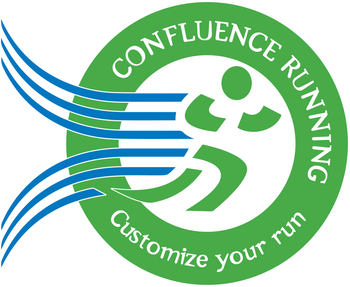Learn to Swim Session 3: Mastering Sculling, Floating, and Breath Control

Learn to Swim Session 3: Building Water Confidence with Sculling and Floating
In today’s Learn to Swim session, we focused on developing water feel, buoyancy control, and efficient movement through foundational drills. The lesson built upon previous sessions, reinforcing breath control, submersion, and floating techniques while introducing sculling, back floating, and streamlined body positioning. These drills are crucial for beginners, helping them gain confidence in the water while refining their ability to move efficiently.
Warmup: Preparing the Body for Movement
We started with a dynamic warmup to acclimate swimmers to the water and reinforce basic movement patterns:
✔ Stand and Kick (2×20s): Focus on straight legs and pointed toes for proper propulsion.
✔ Jump In: Building comfort with water entry.
✔ March to the Break Line and Back: Enhancing body awareness and mobility.
✔ 3× Bubbles: Practicing controlled exhalation underwater.
✔ 2× Bobs: Developing breath control and confidence with submersion.
✔ 10× Bubble Burpees: Introducing quick transitions between breath control and movement.
For more insights and training tips, check out Intermediate Swim Session 2: Mastering Bobs, Sculling, and Dolphin Kicks and Exploring the Benefits of Plyometrics!
Pre-Set: Strengthening Kick Endurance
Swimmers engaged in a structured kicking drill to improve endurance and technique:
🏊 6×10s Sit and Kick with 20s Rest
✔ Each interval increased by +1 second of kicking while rest decreased by -1 second (diminishing rest technique).
✔ This progressive overload method improved leg endurance and power, reinforcing proper kicking mechanics.
Drill Set: Feeling the Water Through Sculling and Floating
Sculling Fundamentals
Sculling is the foundation of effective swimming, helping swimmers develop a stronger "feel for the water" and refine their control.
✔ Hand Positioning: Swimmers kept strong, slightly cupped hands—not too stiff, not too spread apart.
✔ Movement Pattern: Hands rotated outward at 45° to push water out, then inward to pull water in.
✔ Acceleration Focus: By starting slow and increasing speed, swimmers learned how to generate more propulsion with efficient hand movements.
👉 Key Takeaway: Sculling helps swimmers control their position in the water and improves stroke efficiency.
Squat Floating & Treading Water
This drill transitioned swimmers from standing to floating, using sculling to stay buoyant:
✔ Swimmers squatted slightly, lifted their feet off the pool floor, and sculled rapidly to remain afloat.
✔ Hands moved side to side—not up or down—to create lift without sinking.
✔ Swimmers gradually lifted their feet higher, reinforcing core engagement and balance.
👉 Key Takeaway: Proper sculling technique allows swimmers to stay afloat without excessive movement or effort.
Back Floating with a Noodle
To increase comfort in a back float position, swimmers used a noodle for buoyancy while practicing sculling:
✔ Positioning: The noodle was placed under the back, allowing swimmers to lean back while maintaining stability.
✔ Sculling Action: Swimmers moved their hands side-to-side to maintain balance and keep their hips high.
✔ Progression: Gradually, swimmers leaned back further, working toward getting their ears underwater while keeping their hips up.
👉 Key Takeaway: Learning to scull while floating helps swimmers stay relaxed and improves water confidence.
Mushroom Top Drill: Breaking Through Fear
The mushroom top drill helped swimmers develop front floating skills and overcome fear of submersion:
✔ Step 1: Swimmers grabbed their knees while taking a deep breath to create a compact floating position.
✔ Step 2: The natural buoyancy of the chest tilted them forward, helping them experience controlled floating.
✔ Step 3: Those ready for progression practiced exhaling while floating, making themselves less buoyant and sinking gradually.
👉 Key Takeaway: The mushroom top drill teaches swimmers to trust the water, control their buoyancy, and stay relaxed.
Final Drill: Mastering the Streamline Position
A proper streamline position is essential for efficient swimming. Swimmers practiced maintaining this strong, hydrodynamic posture:
✔ Hands Together: Arms extended overhead, squeezing elbows to the head.
✔ Core Activation: Engaged abs and pushed hips forward to maintain a straight body line.
✔ Legs Together: Tightened legs and pointed toes for minimal resistance.
👉 Key Takeaway: Mastering streamline improves speed, efficiency, and technique across all strokes.
Conclusion & Next Steps
Today’s session was all about gaining confidence in the water through sculling, floating, and breath control. Swimmers built strength, endurance, and awareness—key skills for progressing toward full strokes.
📌 Next Class:
✔ Refining streamline and sculling for improved efficiency.
✔ Introducing side floating and kicking drills.
✔ Expanding breath control techniques for smoother breathing in freestyle.
Great work today, and keep practicing! See you at the next session! 🏊💦
Tags for Learning to Swim with Sculling and Floating
Learn to Swim, Beginner Swim Lessons, Swimming for Beginners, Water Confidence Drills, Swim Kick Techniques, Breath Control in Swimming, Sculling Drills, Floating Techniques, Treading Water Skills, Back Float Training, Streamline Positioning, Mushroom Top Drill, Swim Warm-Up Routine, Swimming Endurance Training, Swim Kicking Exercises, Breath Control Drills, Overcoming Fear of Water, Water Safety Skills, Swimming Efficiency Tips, Beginner Swim Training



